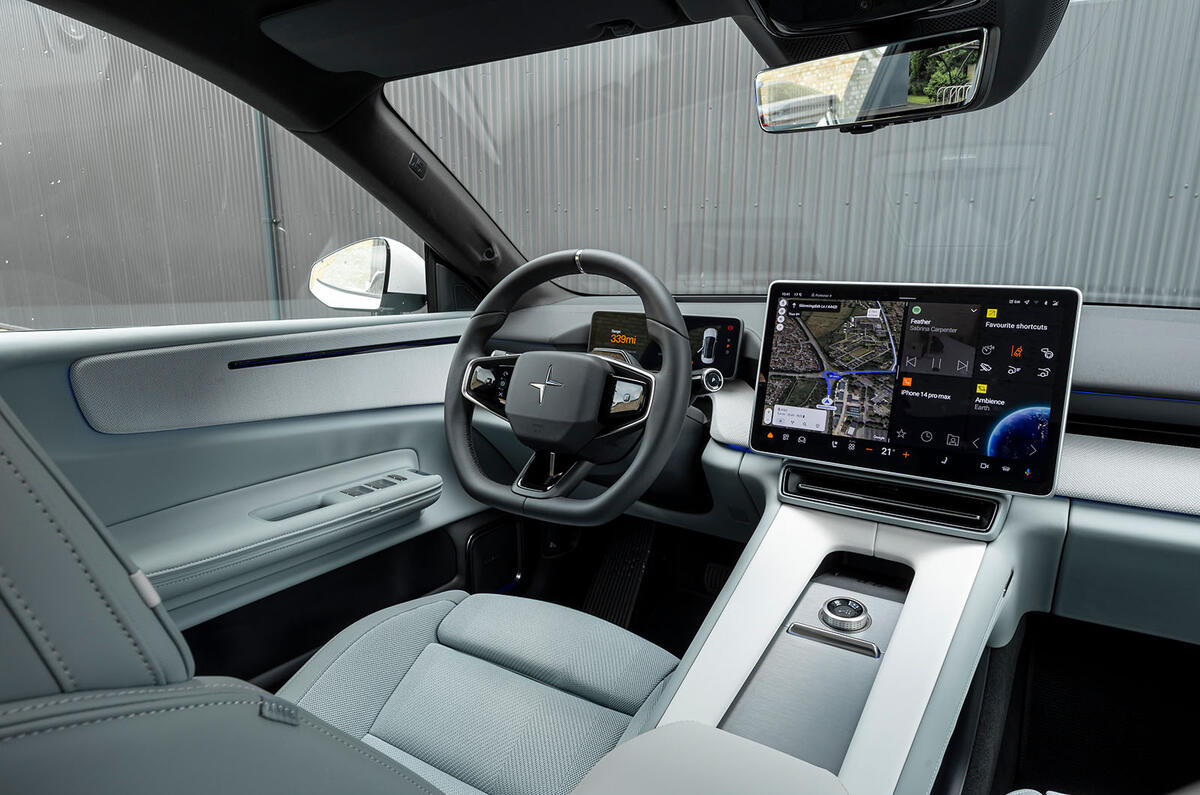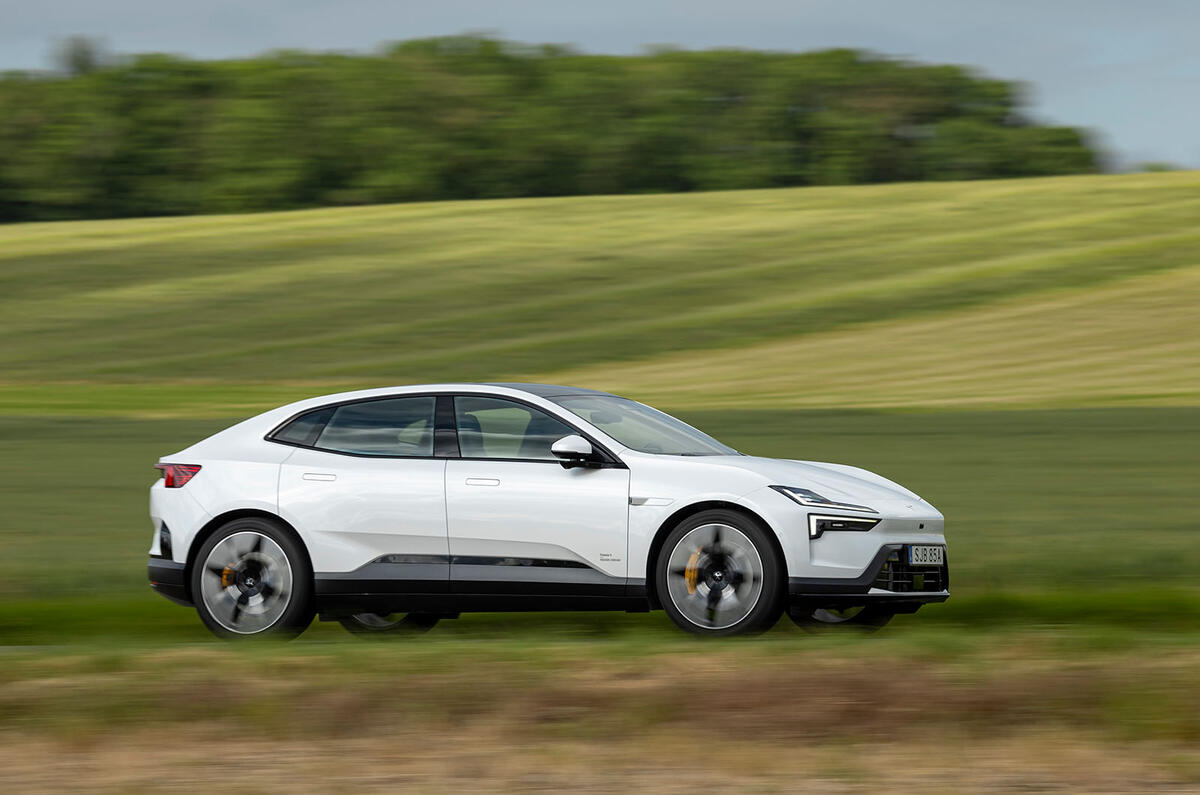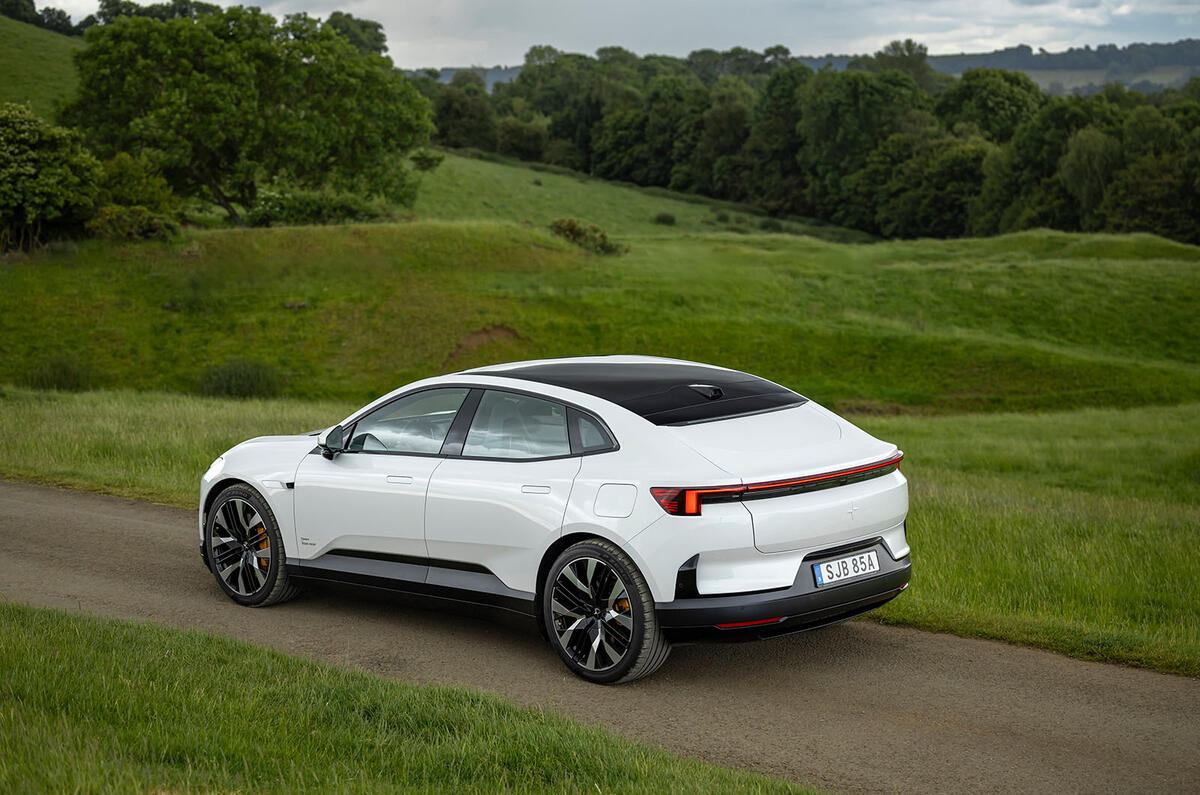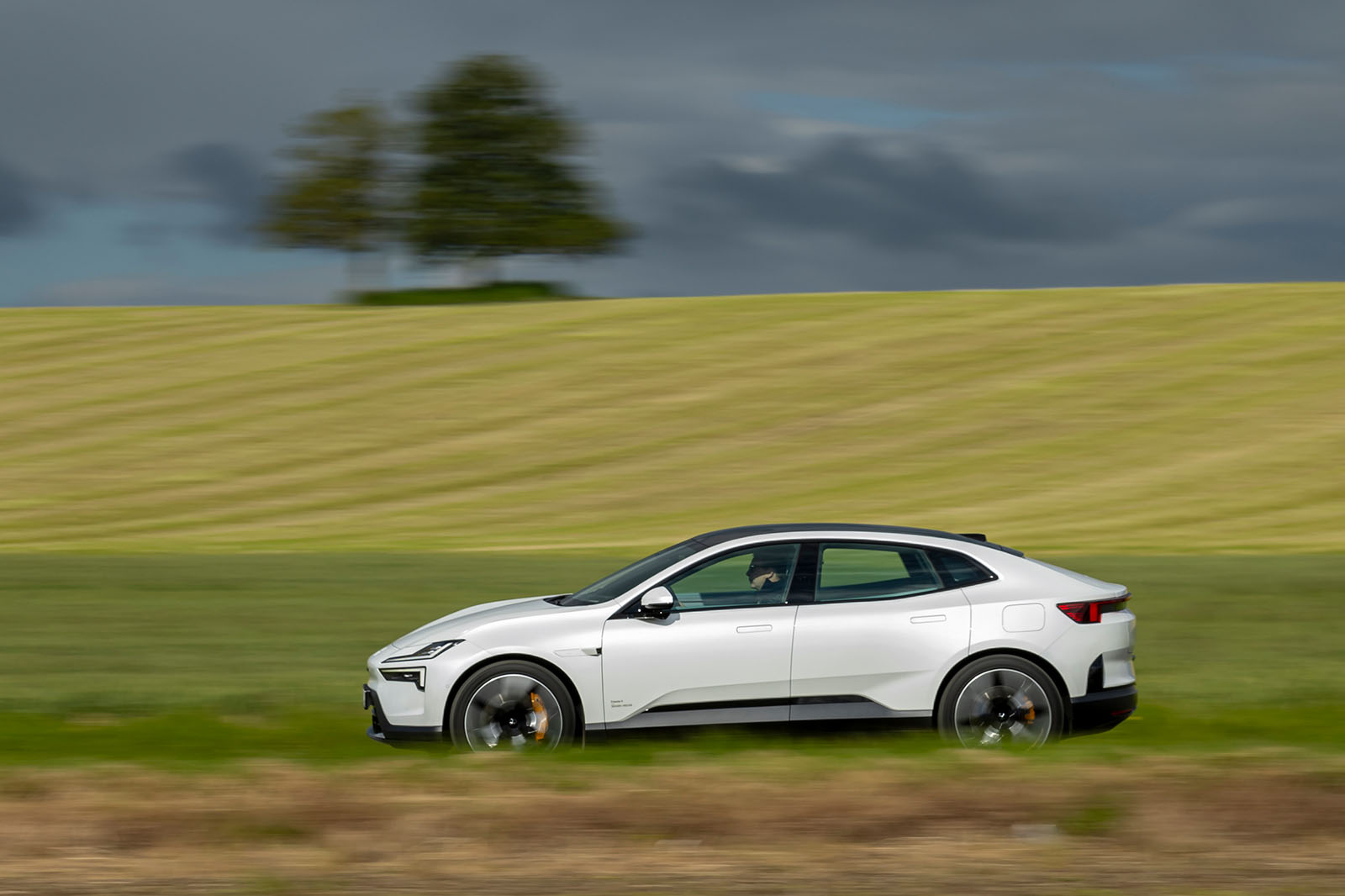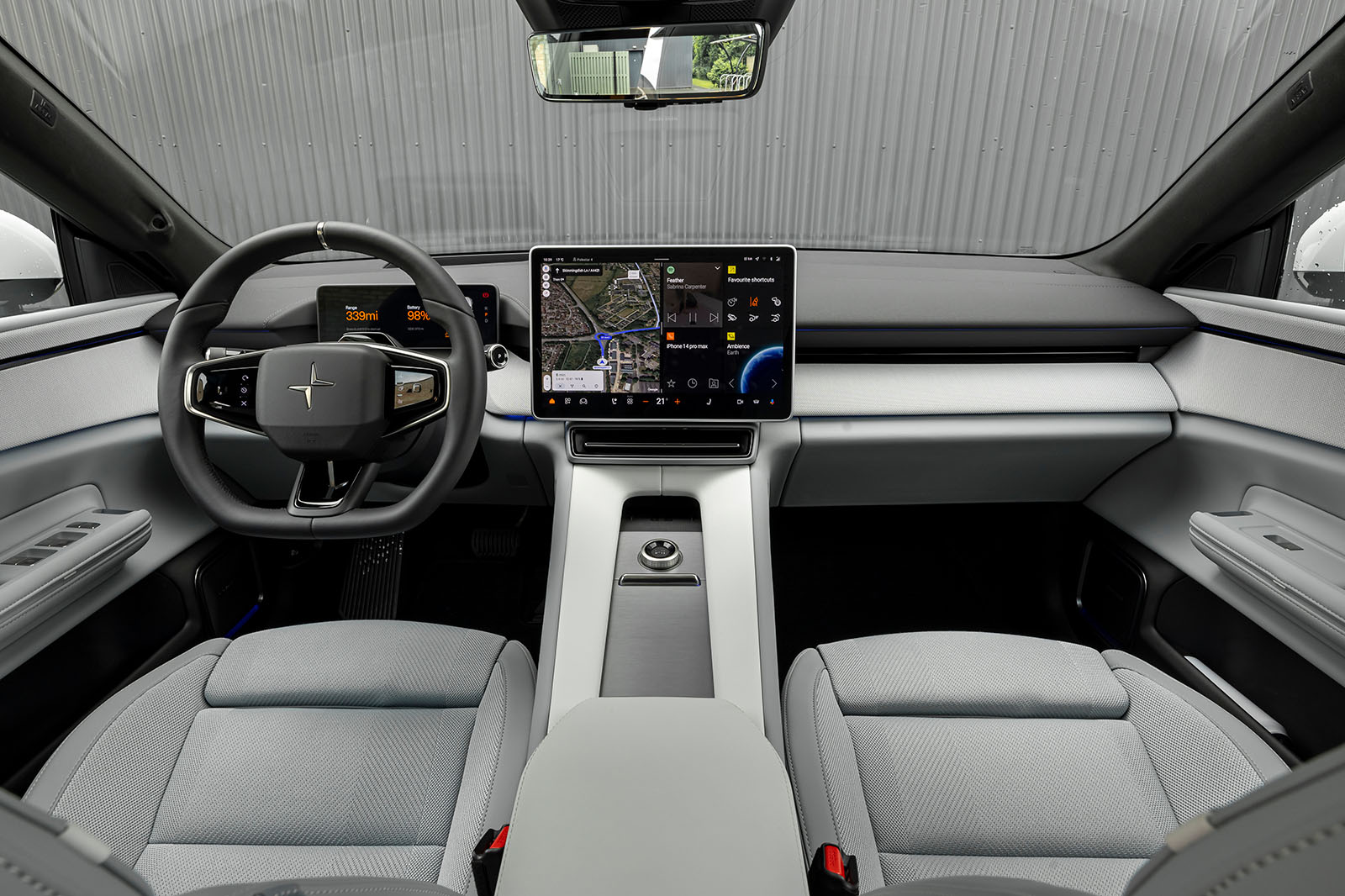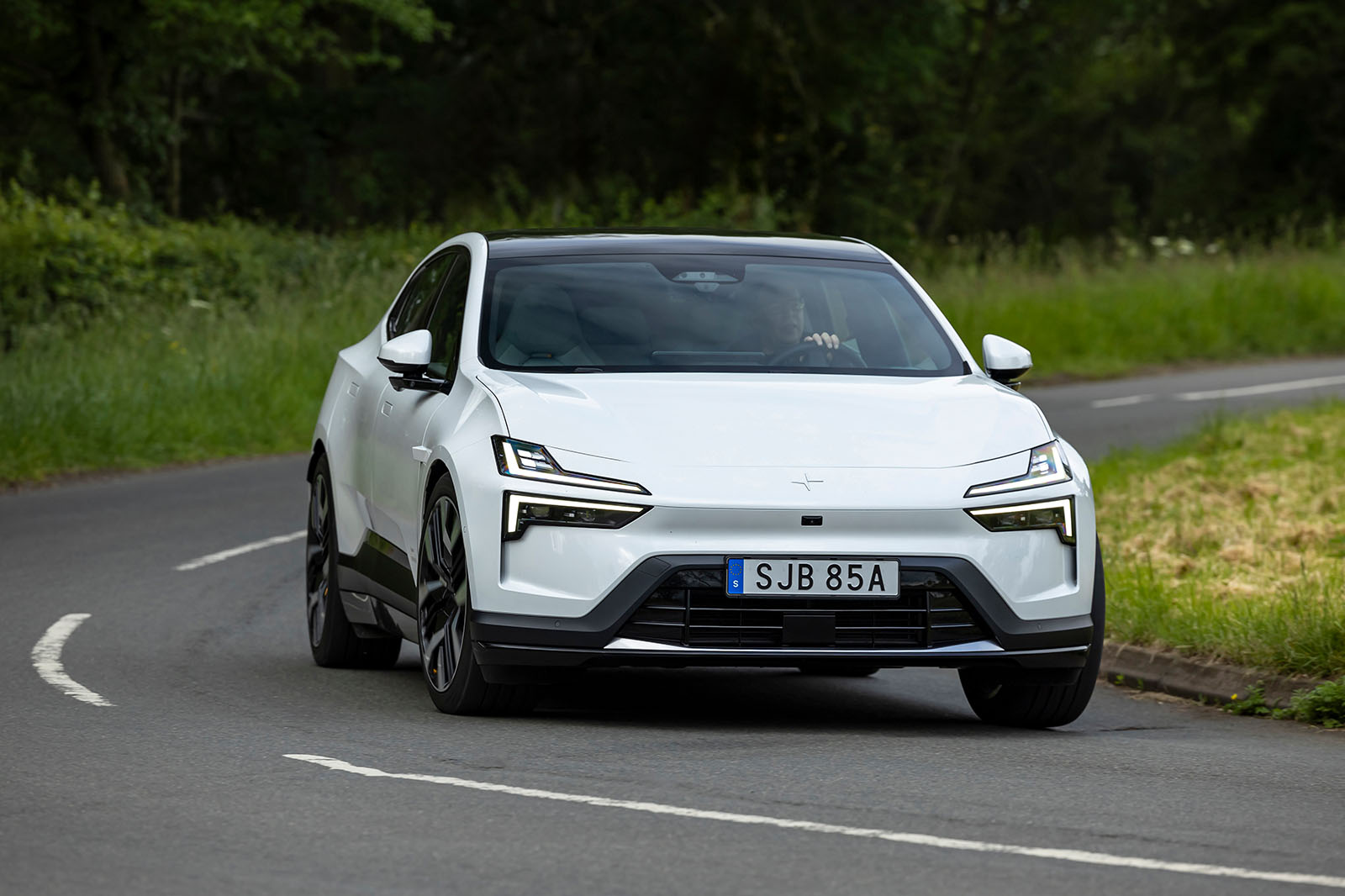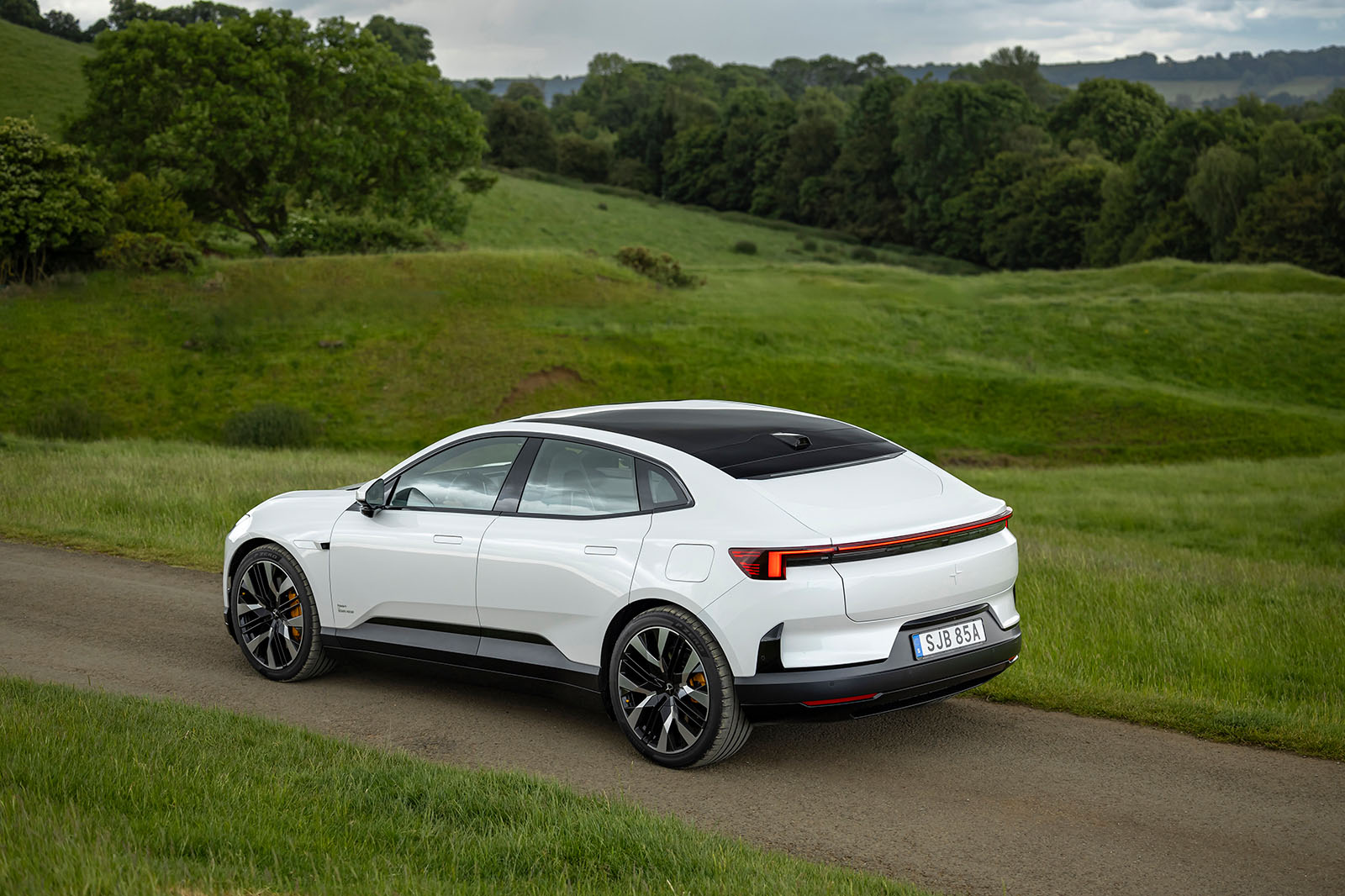Slide into the driver’s seat and the sense that this is more coupé than SUV is only emphasised. Sure, you sit higher than in ‘classic’ saloons or coupés, but not by much.
The dash has strong horizontal lines, complete with hidden vents that you adjust via the screen (annoying), but thankfully there’s a simple readout behind the steering wheel, and if you add the Plus pack you also get a head-up display.
It’s a classy affair in the Polestar 4, including some rather lovely textured textiles, or nappa leather if you prefer. There’s definitely that unmistakable Scandi-chic feel in the materials and design, and it feels refreshingly different to the obvious German rivals – another selling point for any Polestar fans that may well revel in a car that’s anything but the norm.
The landscape infotainment touchscreen gets a heavily altered version of the software used in the Volvo EX30, and there are some neat touches to it. The icons are fairly big, and the adaptive dynamic functions light up orange when they’re activated, so they’re not too difficult to hit and it’s easy to see what’s active and what’s not. Configurable shortcuts on the homepage mean that you can have your lane keeping assistance, brake regen modes and more all a single prod away. The in-built Google Maps is very good, too.
But there are some properly irritating aspects, too. Yes, you can choose what ambience you want according to planetary theme (pick a planet and the car’s ambient lighting adjusts accordingly), but you still have to go three or four prods into the menus to change some adaptive drive features, lights and some other key functions. It’s not as bad as the Volvo EX30’s set-up, but it is still not a user-friendly delight – the laggy screen response on our pre-production infotainment system didn’t help, either.
What is impressive is how much head room Polestar has squeezed into the back. Look closely at the profile of the car, and you’ll notice that roofline is fairly flat, until a noticeable kink just before that missing rear windscreen. By doing that, Polestar has kept enough head room for someone well over six-foot tall to sit comfortably, despite that coupé lines. The seats also recline, and it’s all very plush and luxurious back there.
It's also a bit dark. Who’d have thought that’d happen, with no rear windscreen? The standard glass roof stretched back over rear passengers’ heads helps to alleviate this, but there’s still a weird sense of looming claustrophobia.
The hatchback boot has a very healthy 526 litres of space, including 31 litres under the floor, so there’s some useful SUV-ness for you right there. A 15-litre ‘frunk’ adds further useful cable storage, too. Overall, when it comes to space, the 4 really is pretty impressive – whichever of its many potential identities and rivals you choose to measure it against.
But then visibility is a key part of safety and practicality, and it is frankly annoying to not have a view out of the back of the car. While the rear-view camera that makes up for the solid metal shell at the back is high-def by the standards of such things, it’s not as crisp and sharp as a traditional mirror, and visibility to the rear three-quarters isn’t brilliant, either.
We’re not against tech advances, or additional camera help for side and rear views. But for this road tester, there wouldn’t be a day spent in the Polestar 4 without some level of irritation over the lack of a rear screen and normal mirror.





